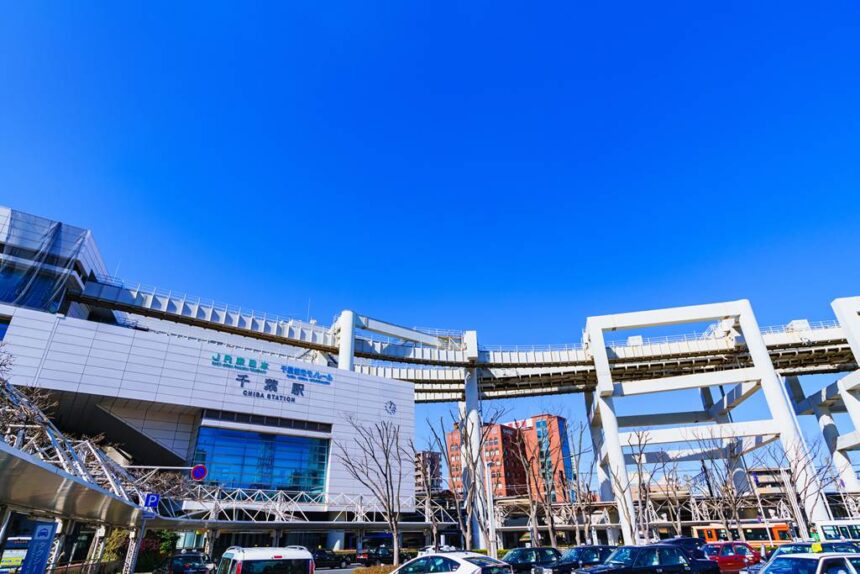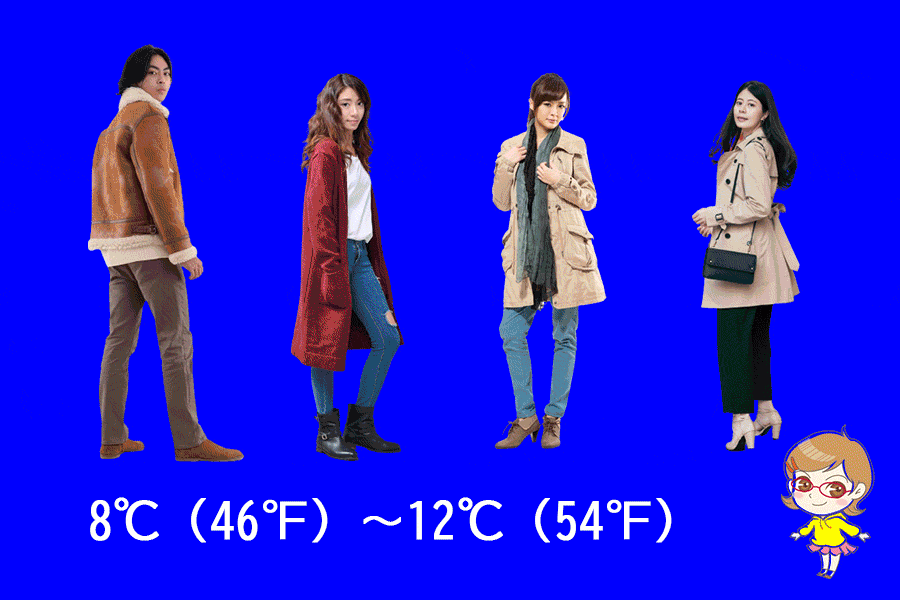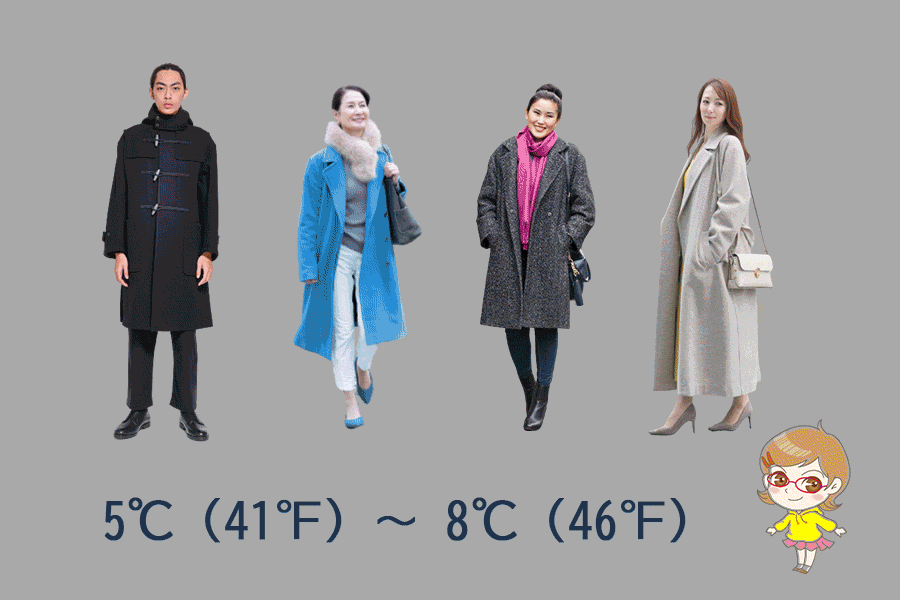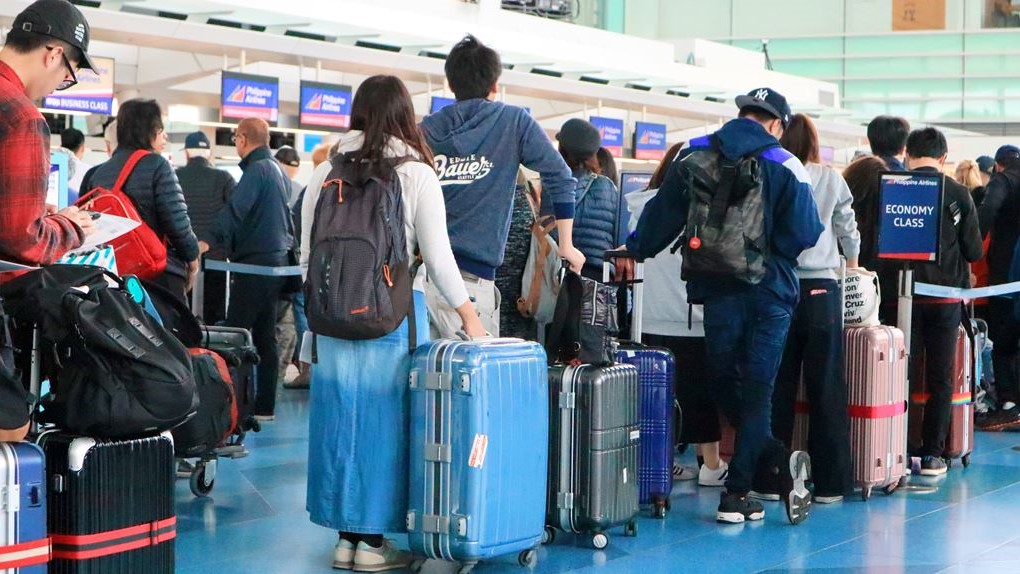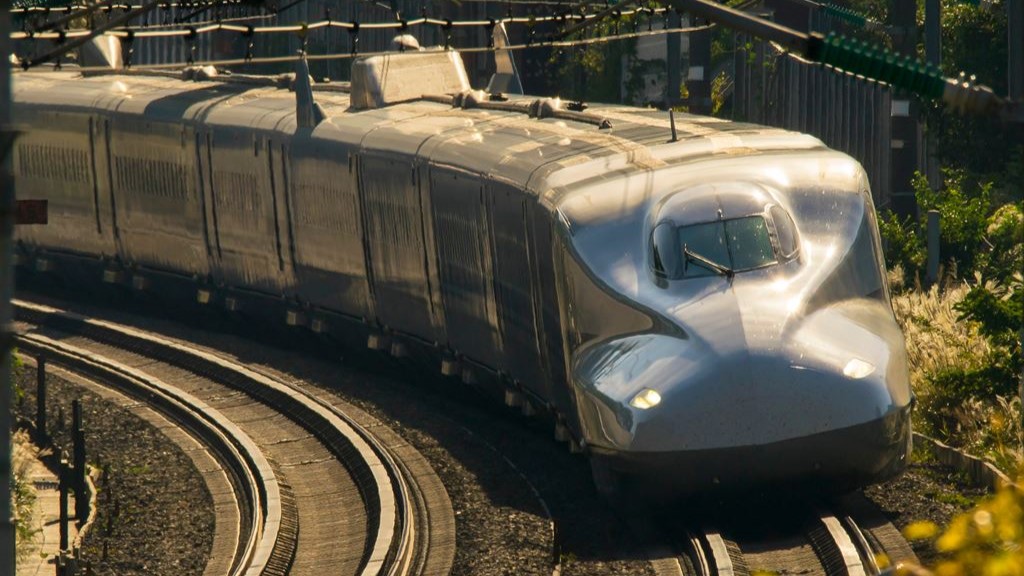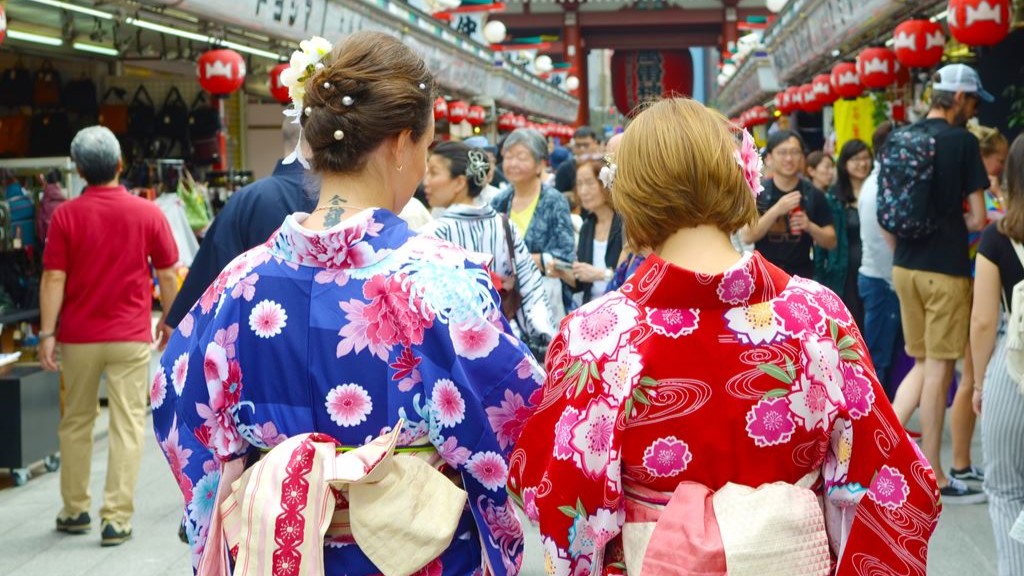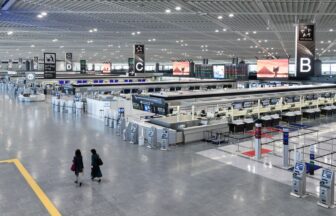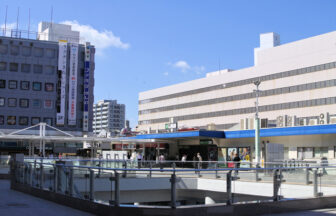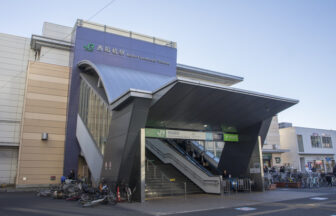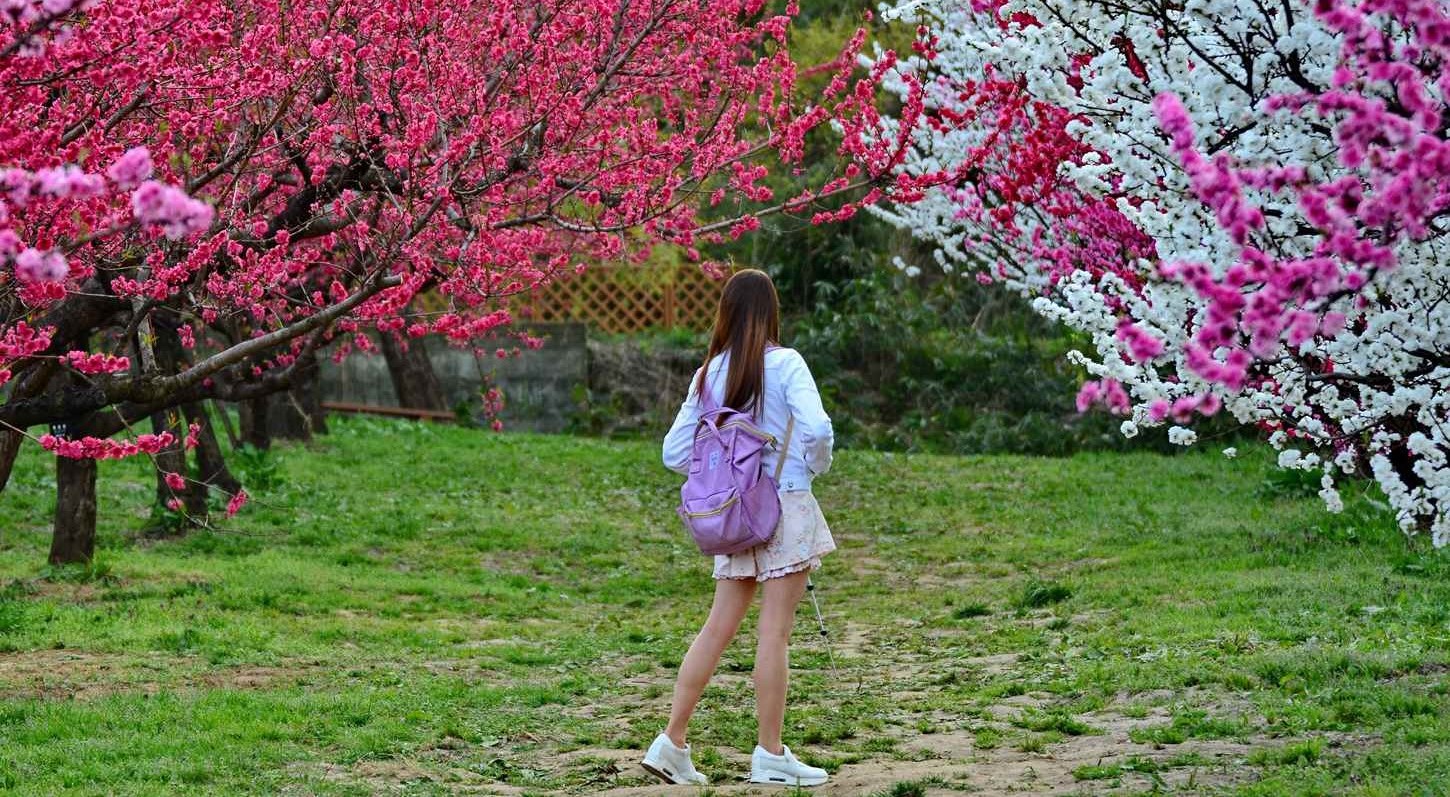1-chōme-1 Shinchiba, Chuo Ward, Chiba, 260-0031 MAP
↓ Click to jump to the relevant section.
| Current Weather | Annual Weather | Tourist Attractions |
| Baggage Deposit | Hotels |
Current weather and clothing
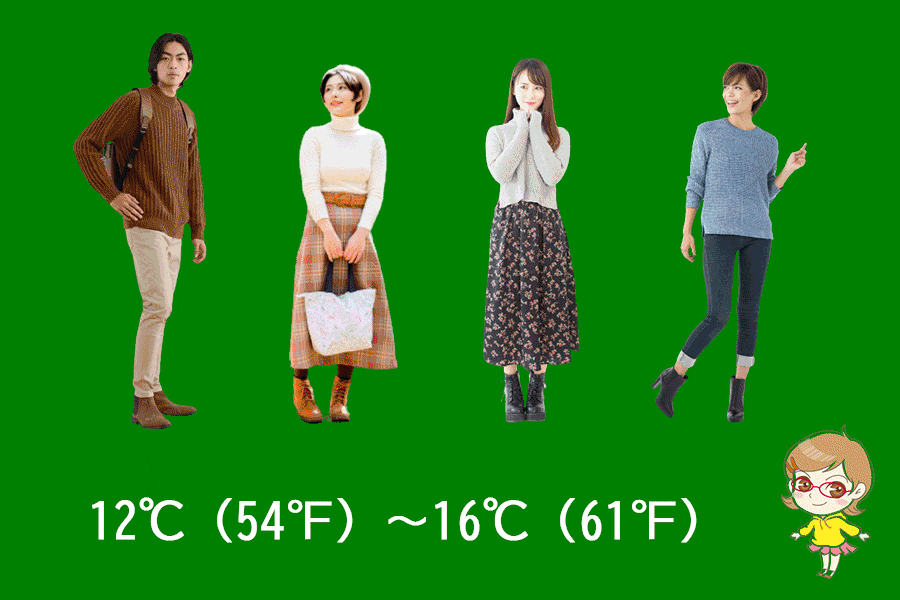
The weather information shown here is the information closest to the station in question. Please note that there may be slight differences.
Yearly temperature changes and recommended clothing
Clothing recommendations for each temperature range
When traveling in Japan with the following average temperatures, the recommended clothing is as follows:
Monthly changes in temperature, precipitation, and snowfall (1991~2020 average, Japan Meteorological Agency survey)
| Jan. | Feb. | Mar. | Apr. | May | Jun. | Jul. | Aug. | Sep. | Oct. | Nov. | Dec. | |
| temperature(°C) | 6.1 | 6.6 | 9.6 | 14.5 | 18.9 | 21.9 | 25.7 | 27.1 | 23.8 | 18.6 | 13.4 | 8.6 |
| precipitation(mm) | 67.5 | 59.1 | 111.3 | 110.4 | 122.3 | 150.9 | 136.5 | 115.7 | 204.7 | 225.7 | 94.1 | 56.8 |
| snowfall(cm) | 2 | 4 | 0 | — | — | — | — | — | — | — | 0 | 0 |
Winter
December
In December, the temperature drops to an average of 8.6°C. It is recommended to wear warm and insulating clothing such as parkas, winter jackets, heavy pants, thermal innerwear, and boots with good traction. Layering clothing is also an effective way to stay warm in the cold weather. Men and women may wear gloves, hats, and scarves for extra warmth.
January
The average temperature in January is 6.1°C. January is the coldest month of the year in Cjiba Station, and temperatures can drop below freezing at night. It is important to wear warm clothing, such as a heavy coat, gloves, a hat, and a scarf. For men, a warm coat or jacket, a sweater or hoodie, and thermal underwear are recommended. For women, a winter coat, a warm sweater or hoodie, thermal underwear, and a warm hat and gloves are recommended.
February
In February, the average temperature is 6.6°C, and it remains cold. Similar to January, warm clothing is necessary. Men should wear a warm coat or jacket, a sweater or hoodie, and thermal underwear. Women should wear a winter coat, a warm sweater or hoodie, thermal underwear, and a warm hat and gloves.
Spring
March
In March, the average temperature rises to 9.6°C, but it is still cool. The weather is often unpredictable, and it can rain. It is recommended to wear layers, including a sweater or light jacket, and a raincoat or umbrella. Men can wear a sweater or light jacket with a waterproof shell, while women can wear a light jacket or sweater, a raincoat, or carry an umbrella.
April
In April, the temperature increases to an average of 14.5°C. It is still cool, but the weather is becoming more pleasant. Men can wear a light jacket or a sweater, while women can wear a spring coat or a light jacket. Layers are still recommended, as the temperature can vary throughout the day.
May
In May, the average temperature is 18.9°C, and the weather is mild. A light jacket or sweater is recommended, as it can still be cool in the evenings. Women can wear a light cardigan, and men can wear a light sweater or jacket. It is also a good idea to have a light raincoat or umbrella on hand.
Summer
June
In June, the average temperature increases to 21.9°C, and the weather is pleasant. A light sweater or jacket is still recommended for the evenings. Women can wear a summer dress, and men can wear a short-sleeved shirt or polo shirt.
July
In July, the average temperature rises to 25.7°C, and the weather is hot and humid. It is important to wear lightweight, breathable clothing, such as cotton or linen. Men can wear short-sleeved shirts and shorts, while women can wear shorts or a summer dress.
August
In August, the average temperature is 27.1°C, and the weather is still hot and humid. Lightweight, breathable clothing is essential, and it is recommended to wear a hat and sunglasses to protect from the sun. Men can wear shorts and short-sleeved shirts, while women can wear shorts, a summer dress, or a light blouse.
Autumn
September
The temperature in September in Cjiba Station is around 23.8°C. It is still hot and humid during this time of year, so it is recommended to wear light and breathable clothing made from natural fibers such as cotton or linen. Women may opt for dresses or skirts and men can wear lightweight shirts and shorts.
October
The temperature starts to cool down in October with an average temperature of 18.6°C. The climate remains warm, but it is advisable to carry a light jacket or sweater for the evenings. Cotton clothing is still recommended as it is comfortable and breathable.
November
November marks the start of the winter season with an average temperature of 13.4°C. It gets colder as the month progresses. It is necessary to wear warmer clothing such as sweaters, jackets, and pants made from wool or other insulating materials. Additionally, gloves, hats, and scarves may be necessary, especially towards the end of the month.
Recommended tourist destinations
Tokyo Disney Resort ®
1-1 Maihama, Maihama, Urayasu 279-0031 Chiba Prefecture
Tokyo Disneyland® and Tokyo DisneySea® are world-famous resort facilities with different themes. In addition to the theme parks, there are five Disney Hotels and a large commercial facility, Ikspiari, which is always bustling with visitors.
Makuhari Messe
2-1 Nakase, Mihama-ku, Chiba 261-0023 Chiba Prefecture
One of the largest convention facilities in Japan. Various events such as music festivals, subculture, and motor shows are always held here.
Mitsui Outlet Park Makuhari
2-6-1, Hibino, Mihama-ku, Chiba 261-0021 Chiba Prefecture
An outlet park with approximately 130 stores. Located in front of Kaihin-Makuhari Station, it is easily accessible and offers a wide range of goods from famous select stores to sports, kids, and interior goods.
Chiba Port Tower
1 Chuoko, Chuo-ku, Chiba 260-0024 Chiba Prefecture
The landmark tower was built in 1986. The observatory, 113 meters above ground, commands a panoramic view of Tokyo Bay. It is also famous for its night view of sparkling factories that shine brightly throughout the night.
Umihotaru
Nakajimachisaki Umihotaru, Kisarazu 292-0071 Chiba Prefecture
This parking area is located on the Tokyo Bay Aqua-Line connecting Kisarazu City, Chiba Prefecture and Kawasaki City, Kanagawa Prefecture. There are plenty of dining, shopping, and amusement facilities, and since it is a 360-degree view of the ocean, many tourists visit for the panoramic view.
Hoki Museum
3-15 Asumigaoka Higashi, Midori-ku, Chiba 267-0067 Chiba Prefecture
The museum opened in January 2010 as Japan’s first museum specializing in realistic paintings. The museum houses a collection of approximately 500 realistic paintings by young and emerging artists as well as masters, with approximately 120 works on display at any given time.
Funabashi Andersen Park
525 Kanehoricho, Funabashi 274-0054 Chiba Prefecture
A vast park named after Andersen, a fairy tale writer from Odense, Denmark, Funabashi’s sister city. The park is divided into attractive zones, including a large flower garden, a field athletic field, an animal plaza, and a children’s museum, where visitors can enjoy themselves all day long.
National Museum of Japanese History
117 Jonaicho, Sakura 285-0017 Chiba Prefecture
This is a national museum that researches and exhibits Japanese history and culture, especially “life history. The museum exhibits the changes in people’s lives in an easy-to-understand manner using reproductions and dioramas.
Naritasan Shinsho-ji Temple
1 Narita, Narita 286-0023 Chiba Prefecture
With a history of more than 1,000 years, this temple is one of the most popular temples in Japan, attracting more than 10 million worshippers a year. More than 150 sweet stores and souvenir stores line the Omotesando approach between Naritasan Shinshoji Temple and Narita Station.
Where to leave your luggage
Chiba Station is equipped with several coin lockers.
(Inside the ticket gates)
Coin lockers are located diagonally across from the restrooms near the west ticket gate.
(Outside the ticket gates)
1) Central ticket gate: There are stairs leading down to the first floor in front of the central ticket gate. The coin lockers are located on the left side of the stairs.
2) Central ticket gate: Exit the central ticket gate and head in the direction of the right hand side, and you will find the “Lost and Found”. It is located next to it.
3) West Exit Ticket Gate: Located on the right side of the West Exit Ticket Gate.
Recommended hotels and inns
Hotel Port Plaza Chiba
8-5 Chibaminato Chuo-ku, Chiba 260-0026 Chiba Prefecture
13-minutes walk from Chiba Station
Hotel class: 4
Hotel style: Charming , Business
Check Rates & Availability:
>> See on Tripadvisor
>> See on Trip.com
>> See on Expedia
Okura Chiba Hotel
1-13-3 Chuominato Chuo-Ku, Chiba 260-0024 Chiba Prefecture
17-minutes walk from Chiba Station
Hotel class: 4
Hotel style: Charming , Business
Check Rates & Availability:
>> See on Tripadvisor
>> See on Trip.com
>> See on Expedia
Sankei City Hotel chiba
3-9-5 Chuo Chuo-ku, Chiba 260-0013 Chiba Prefecture
15-minutes walk from Chiba Station
Hotel class: 4
Hotel style: Budget , Business
Check Rates & Availability:
>> See on Tripadvisor
>> See on Trip.com
>> See on Expedia
Hotel Sunroute Chiba
1-4-1 Shinchiba, Chuo-ku Westrio 1, Chiba 260-0031 Chiba Prefecture
1-minute walk from Chiba Station
Hotel class: 3
Hotel style: Business , Centrally Located
Check Rates & Availability:
>> See on Tripadvisor
>> See on Trip.com
>> See on Expedia
Mitsui Garden Hotel Chiba
1-11-1 Chuo, Chuo-ku, Chiba 260-8626 Chiba Prefecture
11-minutes walk from Chiba Station
Hotel class: 3
Hotel style: Business
Check Rates & Availability:
>> See on Tripadvisor
>> See on Trip.com
>> See on Expedia
Daiwa Roynet Hotel Chiba-ekimae
1-1-14 Fujimi, Chuo-ku, Chiba 260-0015 Chiba Prefecture
6-minutes walk from Chiba Station
Hotel class: 3
Hotel style: Charming , Family
Check Rates & Availability:
>> See on Tripadvisor
>> See on Trip.com
>> See on Expedia
Vessel Inn Chiba Ekimae
1-12-3 Fujimi, Chuo-ku, Chiba 260-0015 Chiba Prefecture
7-minutes walk from Chiba Station
Hotel class: 3
Hotel style: Business
Check Rates & Availability:
>> See on Tripadvisor
>> See on Trip.com
>> See on Expedia
Chiba Washington Hotel
1-13-1 Fujimi, Chuo-ku, Chiba 260-0015 Chiba Prefecture
8-minutes walk from Chiba Station
Hotel class: 3
Hotel style: Business
Check Rates & Availability:
>> See on Tripadvisor
>> See on Expedia
Daiwa Roynet Hotel Chiba-Chuo
2-11 Honchibacho, Chuo-ku, Chiba 260-0014 Chiba Prefecture
11-minutes walk from Chiba Station
Hotel class: 3
Hotel style: Business, Family
Check Rates & Availability:
>> See on Tripadvisor
>> See on Trip.com
>> See on Expedia
Keisei Hotel Miramare
15-1 Honchibacho. Chuo-ku, Chiba 260-0014 Chiba Prefecture
11-minutes walk from Chiba Station
Hotel class: 3
Hotel style: Centrally Located , Charming
Check Rates & Availability:
>> See on Tripadvisor
>> See on Trip.com
>> See on Expedia
We support your itinerary planning!
Click the button to get an overview of hotel information and popular tourist routes from all over Japan featured on our site. We’ve included comprehensive details to aid in planning your trip, so please make use of it.
Comprehensive checklist before traveling to Japan
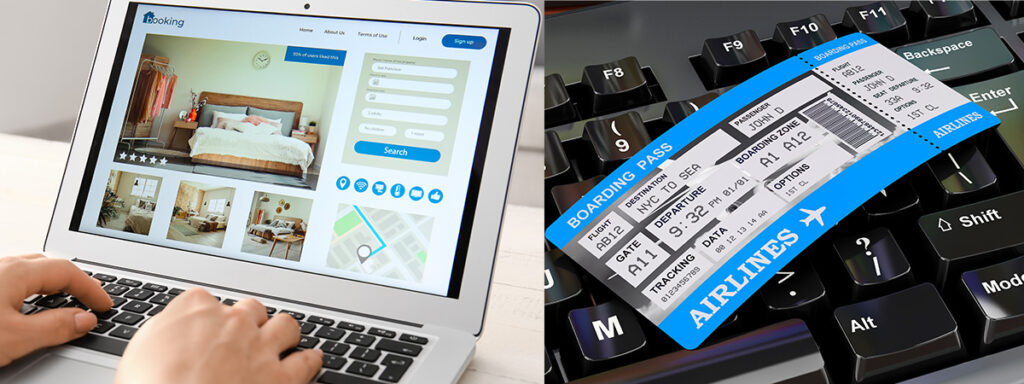
Book flights
Compare and purchase flight tickets
When planning your trip to Japan, it's advisable to start by researching flights several months in advance. Airlines often release promotional fares, especially during off-peak seasons. Use comparison sites like Skyscanner or KAYAK to get a sense of the price range. Be flexible with your travel dates if possible; flying mid-week might be cheaper than on weekends.
>> Visit Skyscanner's official website
>> Visit KAYAK's official website
Order Japan Rail Passes for each family member
Purchase your Japan Rail Pass before departure
The Japan Rail (JR) Pass offers unlimited travel on JR trains, making it a cost-effective option for tourists. However, it's only available to foreign tourists and must be purchased *before* you arrive in Japan. Determine the areas you plan to visit; if you're traveling extensively, a nationwide pass is beneficial, but if you're only exploring a specific region, consider regional JR passes. Children under 12 get a discounted pass, so ensure you order the correct type for each family member.
>>Visit Japan Rail Pass's website
Plan your attire for Japan
Check the weather at your destination on this site
Japanese weather varies significantly by season. In summer, it's hot and humid, so breathable clothes are essential. Winters, especially in the north, can be cold, requiring warm attire. If visiting during the rainy season (June to early July), pack a good umbrella and waterproof shoes. While Japan is generally casual, certain places like temples, shrines, or upscale restaurants may require modest and neat dressing.
Reserve a pocket Wi-Fi or SIM card
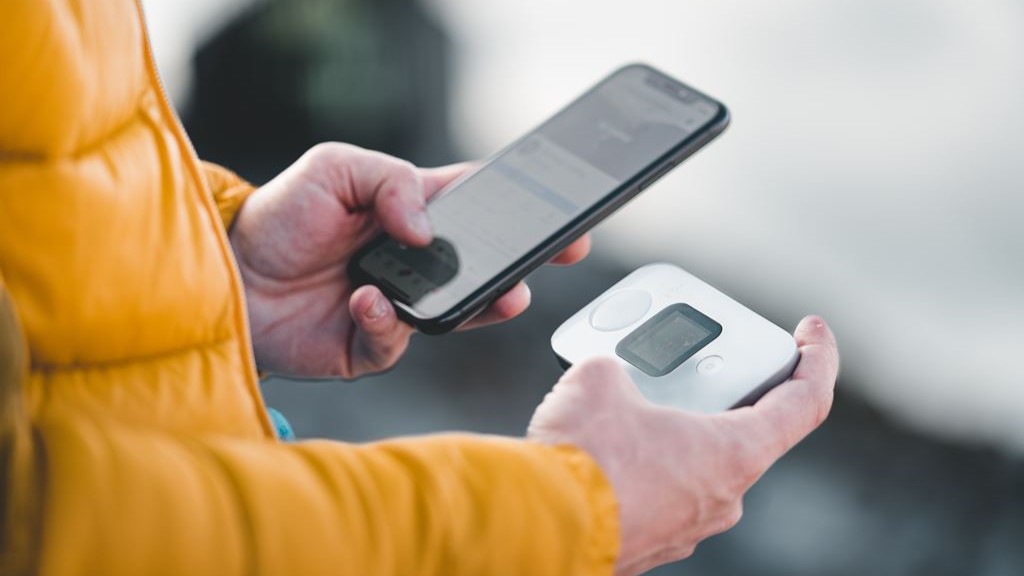
SIM card or pocket Wi-Fi is required
Beyond clothes, consider packing essentials like a universal power adapter (Japan uses Type A and B sockets), portable Wi-Fi or SIM card for internet access, and any necessary medications (with a copy of the prescription).
Which is better: a SIM card or pocket Wi-Fi?
When traveling in Japan, one essential to consider is securing internet access, especially given that many locations still don't offer free Wi-Fi. To ensure you can use your smartphone throughout your trip, you'll typically have three options: (1) a SIM card, (2) pocket Wi-Fi, or (3) the roaming service provided by your mobile company. Roaming services can be quite expensive, so we often recommend using a SIM card or pocket Wi-Fi. While SIM cards tend to be more affordable than pocket Wi-Fi, they can be trickier to set up. Pocket Wi-Fi, on the other hand, can be shared among several users, making it a favorable choice for families or groups.
▼SIM card
Advantages:
Relatively affordable.
Disadvantages:
Can be time-consuming to set up initially.
May have strict data limits.
▼Pocket Wi-Fi
Advantages:
Offers substantial data allowances.
A single device can be shared among multiple users.
Easily usable with PCs as well.
Disadvantages:
Typically more expensive.
Japan's representative services
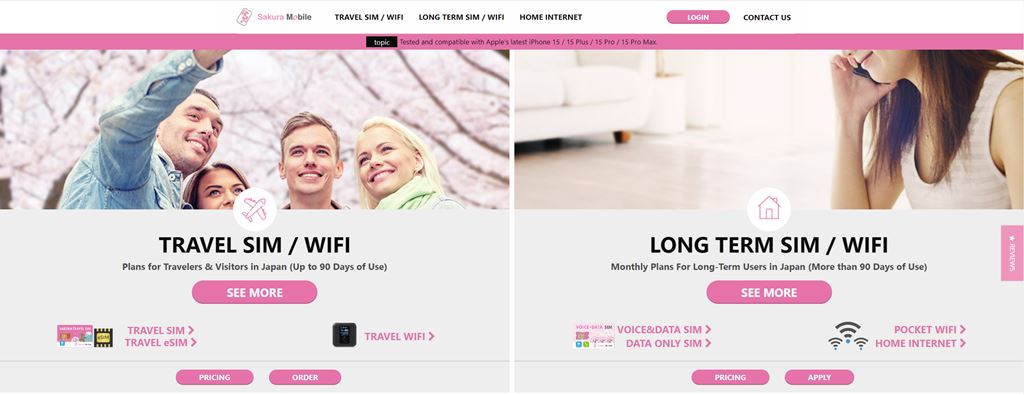
Sakura Mobile's website
▼SIM card
>>Visit Sakura Mobile's official website
>>Visit mobal's official website
▼pocket Wi-Fi
>>Visit Sakura Mobile's official website
>>Visit NINJA WiFi's official website
>>Visit Wi-Fi RENTAL Store's official website
Book local tours as needed
Pre-book your tour and have a great trip!
Local tours offer deep insights into Japan's culture and heritage. Websites like Viator or GetYourGuide offer a variety of tours, from traditional tea ceremonies to modern pop culture tours in Akihabara. Consider unique experiences like staying with monks on Mt. Koya or taking a cooking class to learn authentic Japanese dishes.
>>Visit Viator's official website
>>Visit GetYourGuide's official website
Purchase advance tickets for popular attractions
Make a reservation to avoid crowds
Attractions like Tokyo Disneyland, Universal Studios Japan, or the Studio Ghibli Museum often have long ticket queues. Buy tickets online in advance to save time. Some attractions also have timed entry, so check the specific time slots available and plan accordingly.
▼Tokyo Disney Resort
>>Visit Tokyo Disney Resort official website
>>Visit Viator's Tokyo Disneyland page
>>Visit Viator's Tokyo DisneySea page
>>Visit GetYourGuide's Tokyo Disneyland page
>>Visit GetYourGuide's Tokyo DisneySea page
▼Universal Studios Japan
>>Visit USJ official website
>>Visit Viator's USJ page
>>Visit GetYourGuide's USJ page
Buy travel insurance

insurance concept, health, life and travel insurance
It is important to be prepared for emergencies
While Japan is a safe country, travel insurance is crucial for unforeseen events like health emergencies, travel disruptions, or lost baggage. Ensure your policy covers medical expenses in Japan, as healthcare, though excellent, can be expensive.
Here we introduce online travel insurance services that are popular worldwide.
World Nomads: An online travel insurance service widely endorsed by travelers worldwide. They offer plans that cover adventurous activities and high-risk sports.
>>Visit World Nomads' official website
AIG Travel Guard: An insurance service available to travelers all over the world. They offer a wide range of options, including cancellation protection and emergency medical insurance.
>>Visit AIG Travel Guard's official website
Share your itinerary with emergency contacts
Organize your reservation information
Keep a digital and printed copy of your detailed itinerary, including hotel addresses, train schedules, and booked tours. Share this with a trusted family member or friend not traveling with you.

